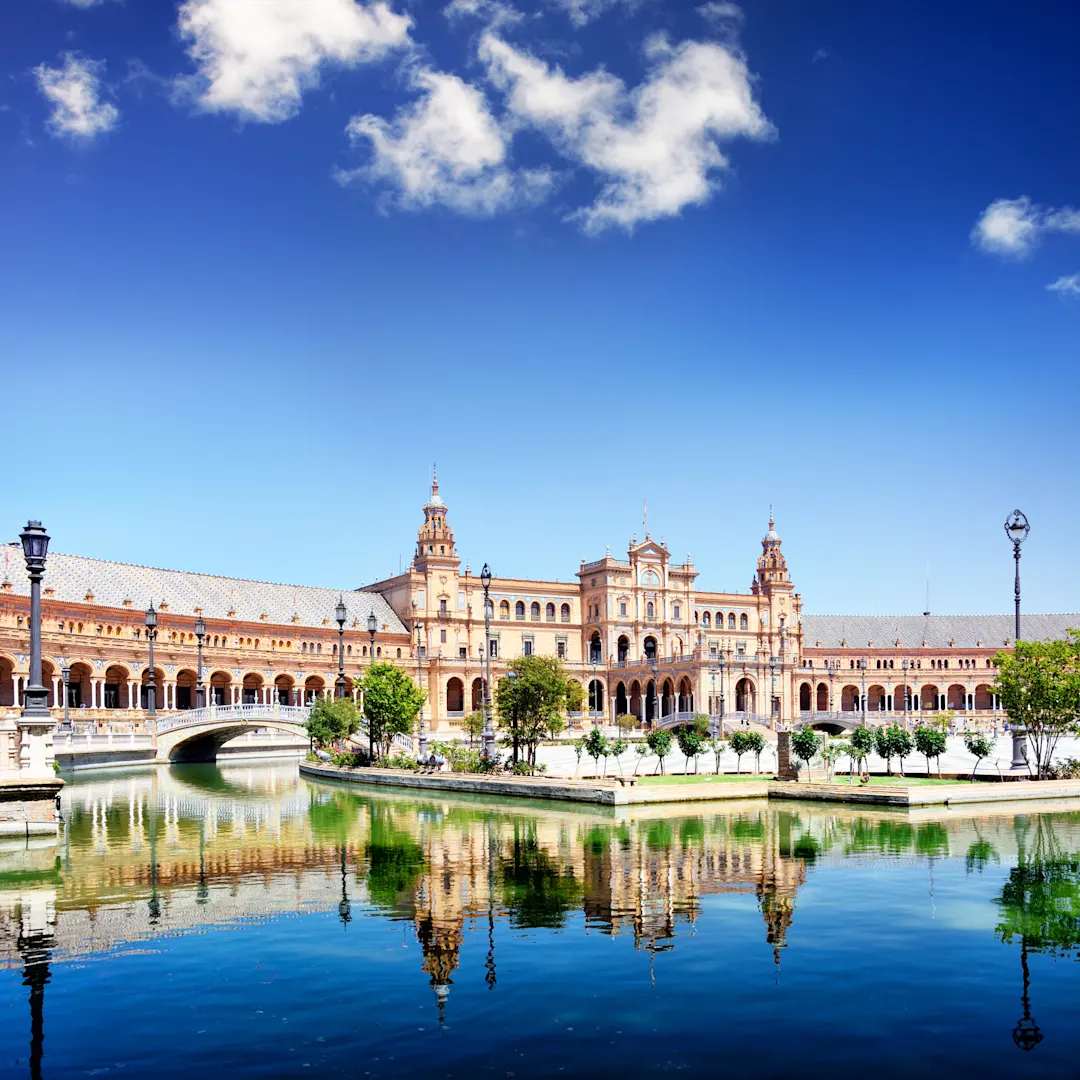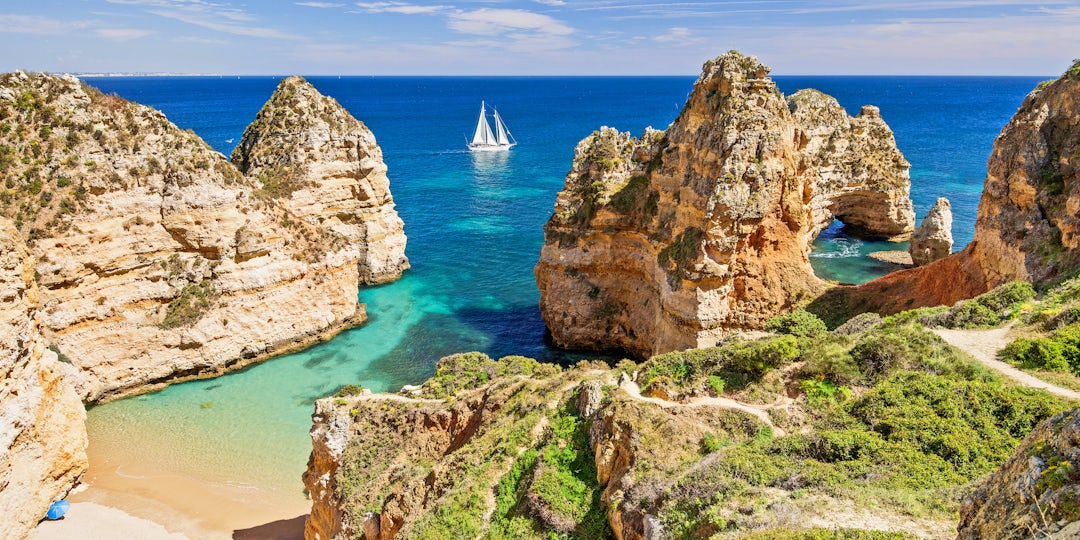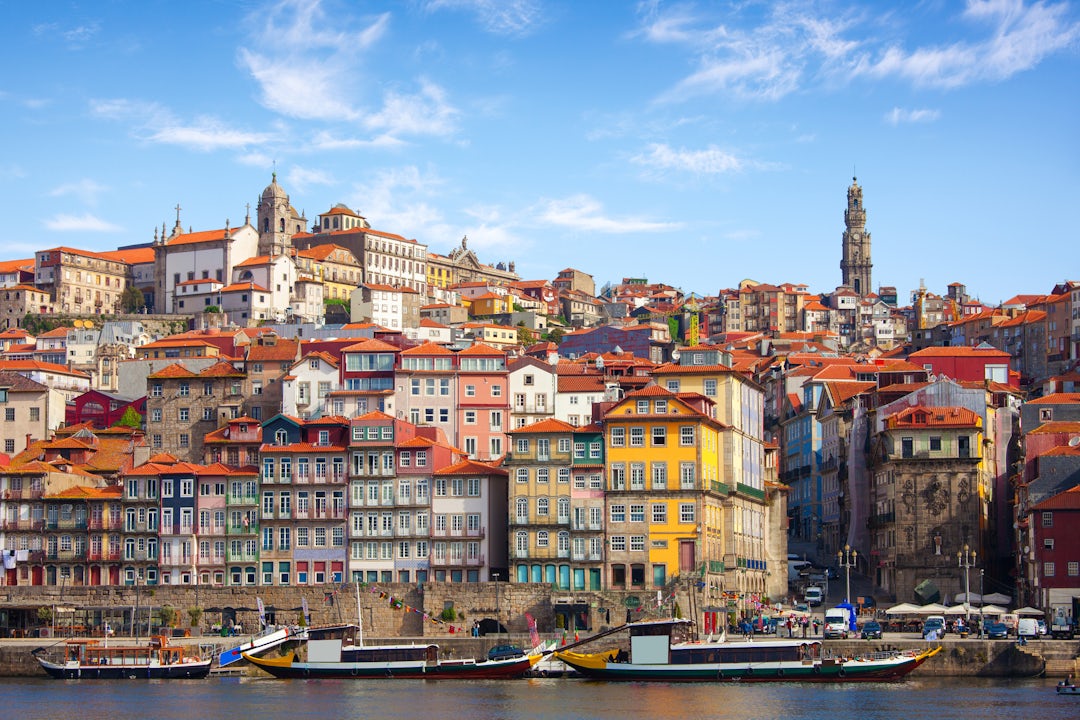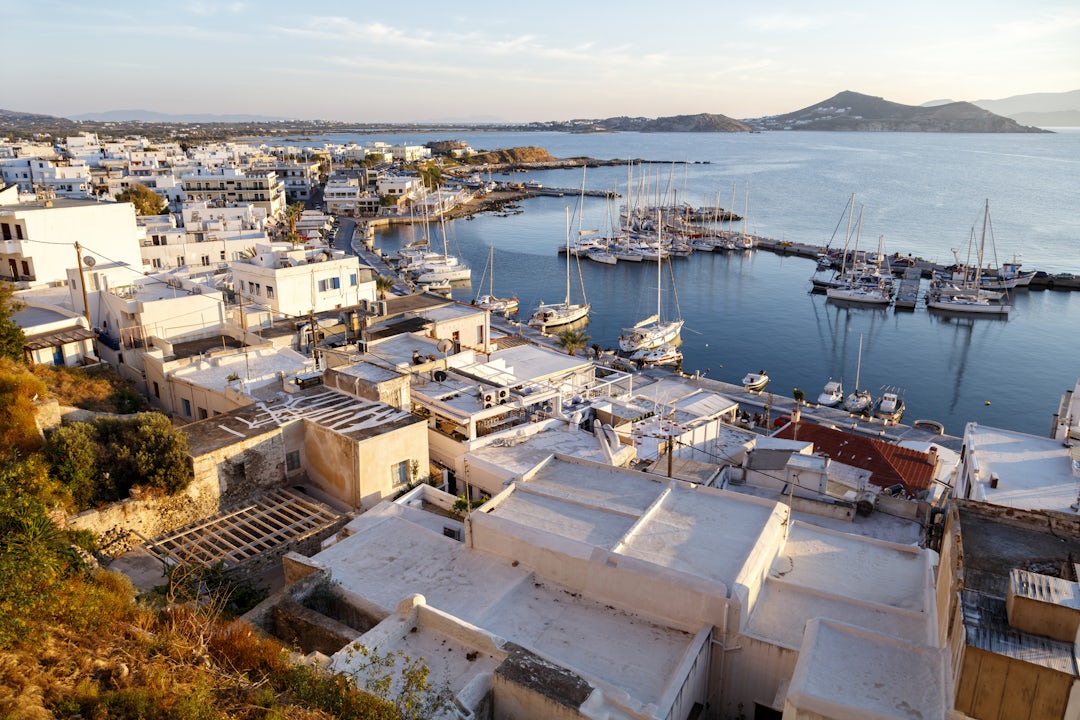

The best time to travel to the Canary Islands
Soak up the sun on seven islands
Plan your Trip
Your tailor-made itinerary – No cost, no commitment
Excellent
4.5 of 5
4,587Reviews
Excellent
Plan your Trip
Your tailor-made itinerary – No cost, no commitment
Our expert recommendation
The best time to visit the Canary Islands is between April and October. The weather is consistently warm and rainfall is rare. Ideal for anyone who wants to go swimming or hiking in the Canary Islands.

Deborah Clauss
Tourlane travel expert for Spain
Updated on 11/25/2025
When is the best time to visit the Canary Islands?
Even though the climate makes the islands a borderline year-round destination, the best time to travel is between April and October. Then there is plenty of sunshine and little rain on the Canary Islands and all activities, from swimming to hiking, are easy to do.
On Fuerteventura and Lanzarote, the ideal travel time is even a little longer, as it gets warmer here overall. Here it gets nice and warm from March right through to November. In the summer vacations, as with all beach vacation destinations, it gets very crowded. This is when many families come to spend their free weeks by the sea. If you are not dependent on the vacation season, it is better to plan your Canary Islands vacation before or after. Even in winter, the Canary Islands remain mild and holidaymakers can enjoy relaxing walks on the beach. It's no wonder that many people stay for the winter.
| Climate table for the Canary Islands | Jan | Feb | Mar | Apr | May | Jun | Jul | Aug | Sep | Oct | Nov | Dec |
|---|---|---|---|---|---|---|---|---|---|---|---|---|
| Max temperatures in °F | 70 | 70 | 72 | 73 | 75 | 79 | 81 | 82 | 81 | 79 | 75 | 72 |
| Min temperatures in °F | 59 | 59 | 61 | 63 | 64 | 66 | 70 | 72 | 72 |
Plan for free
Custom holiday packages and trips that fit your budget
Personalized for you
Itineraries built exactly to your needs
Private VIP guides
A personal English-speaking, native-European travel expert for every step
Peace-of-mind support
Full service assistance before, during, and after your trip
"The Islands of Eternal Spring" is the name given to the seven islands of the Canary Islands. The climate on the Canary Islands is characterized by their location near North Africa. This means: warm summers, mild winters and abundant sunshine. It is pleasantly warm all year round, with average temperatures of 77° F, and daytime temperatures of 68° F are the norm even in winter. The climate is therefore generally moderate and there are no major temperature fluctuations.

Canary Islands in the high season
July and August are peak season in the Canary Islands. During the summer vacations, many domestic and international visitors arrive to spend the school break on the beach with their families. The weather is ideal: warm and dry. Many accommodations are fully booked during this time, and prices for flights and hotels also rise. Aside from enjoying local specialties, beach vacations and active vacations can be ideally combined, as temperatures rarely rise above 86° F despite the summer weather.

Canary Islands in the off-season
Winter in the Canary Islands can be described as shoulder season. Between December and the end of February, the weather is cooler and rainier than in the rest of the year, but compared to the rest of Europe, the winter is still extremely mild. Many visitors come here for a winter escape. There is a second, smaller peak season here, especially around the Christmas and New Year holidays.

Canary Islands in the low season
In the Canary Islands, the months between the winter and summer breaks—specifically March through June and September through November—are considered the shoulder season. However, you can hardly call it a "low season," because the weather remains ideal for both active and beach vacations; there is absolutely no reason not to visit during the spring or fall. The Canary Islands are truly a year-round destination, so this period is simply defined by having fewer visitors than during the peak summer and winter holidays.

Best time to visit Gran Canaria
The best time to visit Gran Canaria is from April to October. With daytime temperatures of around 77° F, the weather here is pleasant year-round. The summer vacations in July and August make the island very busy. If you want more peace and quiet, avoid the vacation season. The same applies to the holidays around Christmas and New Year's Eve.

Best time to visit Fuerteventura
The best time to visit Fuerteventura depends on individual preferences. There are two periods on the island when visitor numbers are particularly high: the summer vacations in July and August, and the holiday season around the end of the year. If you find it too crowded during these peak times, it is better to travel during the shoulder seasons. Whether it's a winter escape, an active trip in the spring, or a beach vacation in the summer, every season has its advantages.

Best time to visit Tenerife
April to October is the best time to visit Tenerife. This is when temperatures average 77° F and it rarely rains. If you fancy a beach vacation, this is the best time to visit, but spring and fall are also good times for hiking and diving. During the summer vacations, you will notice that even more visitors come to the islands. If you prefer a quieter time, travel to Tenerife before or after.

Best time to travel to Lanzarote
If you look at the climate table, you'll see: The best time to travel to Lanzarote is between April and October. But Lanzarote is actually a very clear border year destination. In the summer months the weather is perfect for swimming, in spring and fall the mild climate is ideal for hiking and in winter Lanzarote is the perfect place for a winter escape. Surfers also like to come in winter. During the vacations, whether Easter, summer vacations or around Christmas, Lanzarote gets much more crowded.

Sailing
The Canary Islands lie on the edge of the trade wind zone and sailing in the Canary Islands means open sea sailing on the open Atlantic. This means that winds can sometimes be stronger and heavy seas are not uncommon. The Canary Islands are an extremely interesting sailing area, but are also more suitable for experienced sailors. The weather is generally good for sailing all year round, but the best time to go sailing is in the winter months, from November to March.

Hiking
As the weather on the Canary Islands is mild all year round and there are few fluctuations in temperature, hiking on the islands is good all year round. There is occasional precipitation in winter and it can get crowded in summer. Spring is therefore the best time of year for hiking. From February to May, the weather is warm, the rainy days are fewer and the sun is balm for the soul.

Diving
Thanks to the year-round mild temperatures, diving in the waters of the Canary Islands is possible all year round. However, the best time to go diving is from March to November, when visibility underwater is particularly good and the currents are less strong. Ideal for discovering the underwater world off the coast of Africa.

Surfing
While beach holidaymakers mainly visit the beaches of the Canary Islands in the summer, surfers are particularly popular on the beaches of the Canary Islands in the colder months of the year. From November to February, the waves in the Atlantic Ocean offer perfect conditions for surfing in the Canary Islands. Thanks to the mild winters and good wind conditions, this is the peak season for surfing.
Our most popular trips
Would you like to experience the special climate and unique landscapes of the Canary Islands? Then let our experienced travel experts advise you and look forward to your individual trip to the Canary Islands.



































































































































































